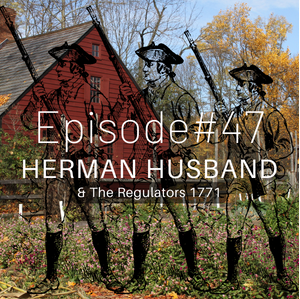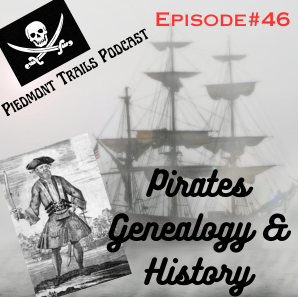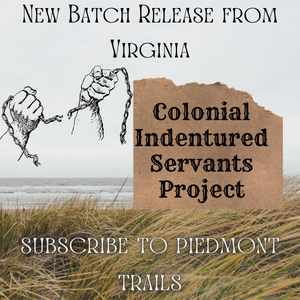First of all, just where is Troublesome Creek? It is located at North Carolina Historical Highway Marker J-16 in Rockingham County. The area was filled with patriots who were active during the days leading into the American Revolutionary War. By 1770, a colonial ironworks, entitled Speedwell Furnace, had been organized along Troublesome Creek area. Nathaniel Greene’s Army camped at this spot after the battle of Guilford Courthouse in 1781 and our first president, George Washington, visited the site during his southern tour in 1791.
The settlers who resided in the area were mainly from Pennsylvania who migrated down the “The Great Wagon Road” in search of new lands. Joseph Buffington, was one of these settlers, a Quaker who originally purchased the site of the ironworks to establish a mill along the creek. For more information on Buffington, search author Lindley S. Butler, “Speedwell Furnace: The Ironworks on Troublesome Creek,” Rockingham County Historical Society pamphlet (1972).

Keeping ahead of the British, Col. Otho Williams and his “Light Corps” found a good location to defend against the approaching enemy – near Speedwell’s Furnace. Per his standing orders, his objective was to delay the British as much as possible.
Within his Light Corps, Col. Williams had an Irishman from Guilford County named Tom Archer. He was a large man who would “fight his weight in wildcats” and “hardly ever missed his aim at any distance within two hundred yards.”
When the British brought up their field pieces to fire on the Patriots, Tom Archer stepped into the middle of the road and yelled, “Hallo there Mister, I wish you would take that ugly thing out of the road, or it may cause some trouble yet before all is over.” Turning to a nearby officer Archer said, “Captain, may I shoot that cussed rascal? for he has no business here, no how.”
The captain told Archer to wait until they applied the match, for they needed to detain the enemy as long as possible. When the British were ready to fire, Archer stepped into the middle of the road again and yelled, “Hallo there Mister, I say you had better take that thing out of the road, or I’ll be hanged if I don’t shoot some of you.” Then turning to the officer he asked again, “Captain, may I shoot the cussed rascal now, for tellin’ don’t do him one bit o’ good?” His captain just nodded and smiled.
Archer placed his rifle against a tree to steady it and fired – hitting the distant artilleryman holding the match.
The Patriots mounted up and rode away before the cannon crew could recover and fire at them. Lord Cornwallis and his army was delayed another two hours as a result.
Later that day, Lt. Col. Henry Lee moved across the Irwin Ferry and stopped his weary men so they could eat. As they began, the British vanguard under Brigadier General Charles O’Hara appeared and fired at his pickets. Lt. Col. Lee quickly formed his men and moved away from the enemy, who was equally startled and halted, requesting orders on what to do.
Lt. Col. Lee used the delay to get his infantry away, but the British were soon closing in hot pursuit. Both armies were covering thirty miles a day. Now, into the cold night the race went on. As they moved forward, Col. Otho Williams saw campfires in the road ahead and sent a man to hurry there and to warn Major General Nathanael Greene that the British were near.
The man quickly returned informing Col. Williams that this was Greene’s camp from two days ago, and a few men had remained behind to let them know that fact.
The British could not keep up the pace with Col. Williams, so they halted for the night. The Patriots eventually also stopped, but at midnight they were awakened because the British were moving again. A heavy frost had fallen on the deeply rutted road, making walking quite difficult and very noisy.
Lord Cornwallis thought he had Major General Greene just where he wanted him – backed up to the Dan River. A recent rainfall had raised the level of the river making it impossible to cross except by boat. Greene had been prepared for this and had readied his crossing before he even reached the river. Boats had been waiting for him when he got there.
On the afternoon of February 14th, Col. Otho Williams received word that Major General Nathanael Greene and his army had crossed the Dan River and made it safely into Virginia. Col. Williams marched his men to Irwin’s Ferry, where he found boats waiting for him to take his men across into Virginia. They crossed over at sunset, having covered forty miles in sixteen hours.
The British arrived after sundown to discover that the Americans had already crossed and that the river was too swollen to attempt fording it.
The site suffered from fire damage during the late 19th century and was rebuilt in 1915. It is now listed as an historical state location and the Rockingham County Historical Society is listed as it’s current owner.

Categories: Featured Articles










